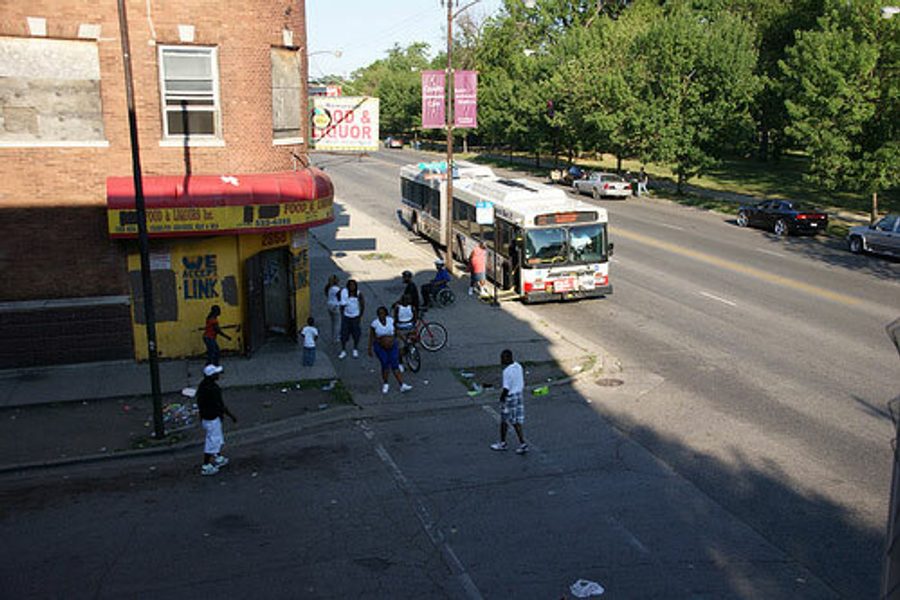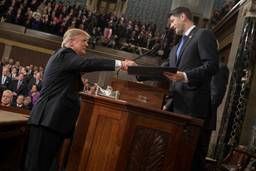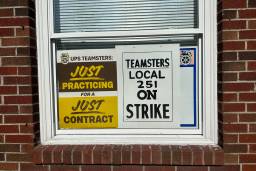Where the Real Danger Lies
Some indisputable consequences of closing 50 Chicago Public Schools.
Marilyn Katz

“The operation was a success, but the patient died.” Nowhere may that old saw be more apt than about the likely outcome of the Board of Education’s decision on Wednesday to close 50 neighborhood schools.
They say this truly radical operation is necessitated by a dearth of funds and a diminishing number of students attending the targeted schools (although those numbers are disputed). But are the closings the correct remedy, or is the board, like an inexperienced medical student, treating the symptom not the disease, blithely ignoring the dangers of the operation and the serious long-term side effects, both known and unknown?
While the debate about the benefits or harm to children and schools will go on for years to come, there is one thing that is beyond debate. The most profound losses will be felt by communities that are already the most vulnerable – those communities that have become the poster children for the city’s growing income inequalities.
Last year, in a truly laudable move, the city of Chicago’s Department of Health made available online an extraordinary set of data, ranking the health of each of its 77 community areas on the basis of a variety of indices, including income, poverty, teen pregnancy and unemployment. Using the data, the City created a “hardship index” that ranks each community from 1 to 100 in order of the ease or difficulty of life.
When comparing the “hardship” list to the school closing list, one finds that all but 16 of the 50 schools targeted for closings are in communities with a hardship rating above 50. Seven targeted communities — South Lawndale, West Englewood, West Garfield Park, Englewood, North Lawndale, East Garfield Park and Humboldt Park — are among the city’s 12 most distressed communities. These eight alone will lose 16 schools.
The closings are just the latest blow felt by these communities. While it has been decades since the South and West Sides of Chicago were considered prosperous, the last 10 years have wreaked havoc with what were relatively stable communities as recently as 2000. The vast majority of closings are in communities of boarded-up homes that have been devastated by the foreclosure crisis, a crisis that has gripped Chicago harder than any other major city. The situation was born initially from the predatory lending practices of both the 1990s and 2000s, but more recently from a decline in jobs and incomes over the last decade that has seen the loss of nearly 200,000 jobs in Chicago and, as serious, the lowering of wages in Illinois by 15 percent. Some facts:
- 33 of the school closings are in communities that have lost more than 20 percent of their housing to foreclosures.
- All but 8 of the closings are in communities where the unemployment rate is 10 percent or higher.
- 16 of the closings are in six communities, such as Austin, Auburn Gresham and West Englewood, where the unemployment rate remains above 20 percent.
- In 10 of the communities, where a total of 22 schools are closing, the average per capita income is $15,000 a year or less.
- In 15 of the communities, the teen birth rate is two to three times the national average.
- The communities where schools are to be shuttered include 9 of the 11 communities with the highest homicide rates in the city, which in turn are some of the highest in the nation.
These are communities that need schools — and not just schools. They need the stable, relied-upon neighborhood schools in which their families have attended over time, which are often times the only significant public spaces and which, most important, act as community anchors and assets for growth.
The school closings, then, are just the latest chapter in the story for many communities — a story of a downward spiral of lost income, lost value, lost opportunity, lost hope. They do not, however, have to be the final chapter.
Rather than treat the symptom, population loss, we would be better off treating the disease — the policies and conditions that have created the poverty and disinvestment.
Just like global warming, the loss in these communities is the result of human activity. And it is in human activity and human decisions that the remedies lie.
Reclaim and rebuild the housing. Chicago could have been prepared, and avoided the worst of the housing bubble. Chicago was one of the first cities to put on the books anti-predatory lending ordinances — and that’s where they stayed. While there were a few prosecutions of a few individuals, the banks that wreaked havoc on these communities went unscathed. While city officials waited for the federal cavalry to arrive or the market to “right itself,” communities like Chicago Lawn, Auburn Gresham, Woodlawn and Englewood were much left on their own to struggle with the falling property values, increased violence and failing businesses that vacant and abandoned homes bring. Today, thanks to the efforts of local community and advocacy groups like Chicago Lawn’s Southwest Organizing Project and Business and Professional People for the Public Interest, there are tools like the newly created Cook County Land Bank that could, as President Obama suggests, take the thousands of vacant properties, many of them bank-owned, rehab them and put them back to use as the homes they were meant to be. Addressing the 200 vacant properties in a community like Woodlawn or the 1,000 in Chicago Lawn or the hundreds in Englewood and Auburn Gresham would provide needed housing, provide sorely needed jobs and allow the rebuilding of communities block by block.
Rebuild Chicago as a city of opportunity for all. While most of the nation’s cities are recovering from the great recession, Chicago has not, with the fastest-growing unemployment rate of any major American city and the third-highest black unemployment rate in the nation, superseded only by those of Las Vegas and Los Angeles. Just as worrisome, incomes of middle and lower wage workers in the city — the vast majority of residents in the affected communities — have fallen by 15 percent while the income of those in Chicago’s richest communities has risen.
Rather than fire more than 1,000 teachers, who would join the 11,000 government employees who’ve already lost their jobs in the last year, Chicago should invest to expand the economy — not just by reclaiming homes, but also by actively funding the expansion of companies that make things — companies too often written off as too small to care about, too irrelevant or not part of the new, hip economy that has fueled the growth of Chicago’s North Side.
As a recent map published online by The Atlantic Cities graphically displays, virtually all jobs held by residents of Chicago’s West and South Side are in retail or hospitality — fields where low wages and depressed hours result not only in no benefits but in average annual wages of $15,000 or less in the communities where foreclosures, unemployment and poverty are the worst and where schools are targeted for closure. If we want our classrooms to be full, it would be useful for young people to see that if you stay in school, graduate and toe the line, you can look forward to a job that sustains — one with a guaranteed living wage and enough hours of work to make it mean something.
And finally, rather than close them, invest in and strengthen community schools, making them an asset on which communities can build. It is not an accident that when new places are settled, a school is one of the first edifices to be erected. Schools are anchors for communities. They are not only places of learning for children, they are the places that parents rely upon to keep children safe, where child and adult friendships are forged, where civic life occurs, where community is born and nurtured. Shuttering schools not only creates one more massive abandoned, unlikely-to-be-purchased structure, it deprives a community of a gathering place, causes families to move away to ”better neighborhoods,” and weakens the fabric of democracy and civic life.
In the 1990s, when Chicago was worried about losing its middle class to the suburbs, then-Chicago Public Schools Chiefs Paul Vallas and Gery Chico did something very smart. Working with the Chicago Teachers Union, they created stellar schools that could attract parents and students who would otherwise have fled to the suburbs – from competitive high schools to school/park collaborations to experiments with small and even charter schools. The difference between this approach and the magnet/charter school approach that many suspect is on the horizon from the Emanuel administration is that Vallas and Chicago’s schools are mainly open enrollment and prioritize neighborhood attendance.
More recently, with private foundation funding, a program called Elev8 co-located health clinics and ”centers for working families” in five Chicago public schools. In each case truancy declined and student turnover lessened as school buildings became an even more critical resource for the These program can only work in neighborhood-based schools where families and children are connected to institutions — schools like the 50 that are being closed. If they are underutilized, strengthen schools and ties to them by using them for co-locations for city health clinics, afterschool programs, centers for working families, community service centers replete with building permits, aldermanic offices, etc. … but keep them in service to the community and community building.
With the life of young people and communities at stake, it would have been, and still can be, far wiser to revoke the Chicago School Board’s rash proposal and instead nurture use the tremendous asset that these schools and buildings represent to ensure the life, not death of the communities they purport to serve.








